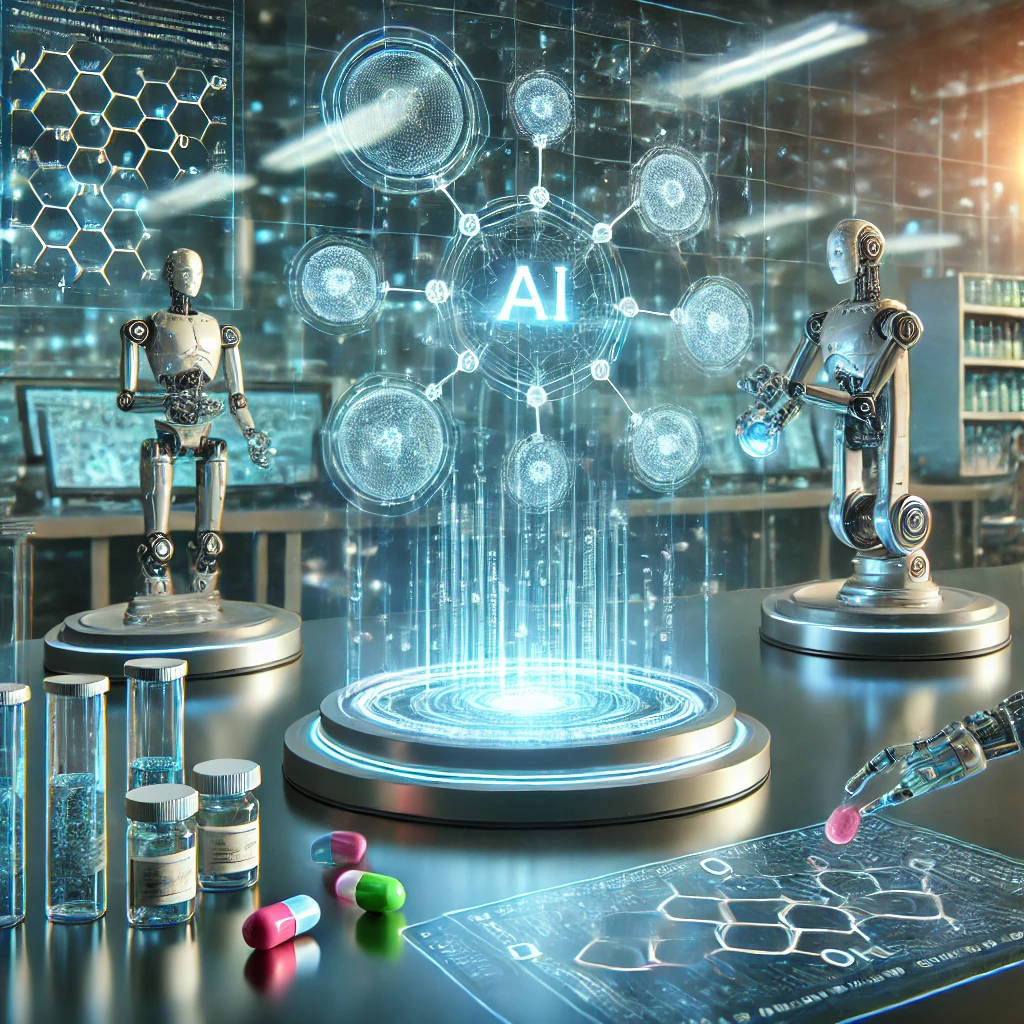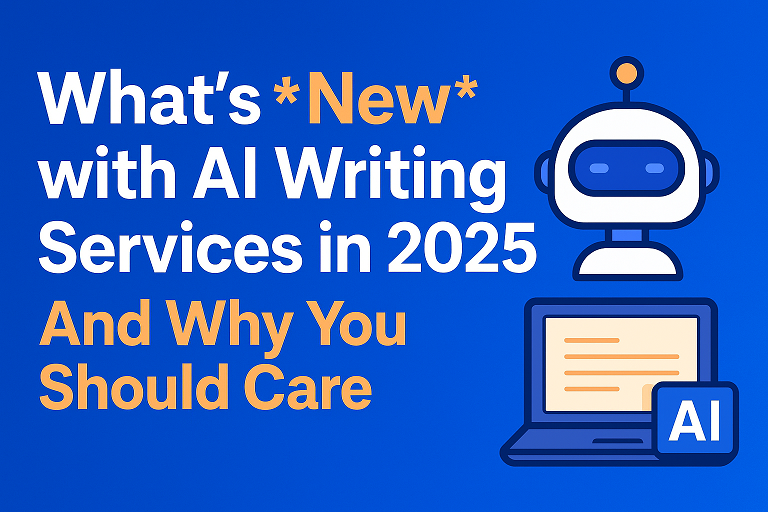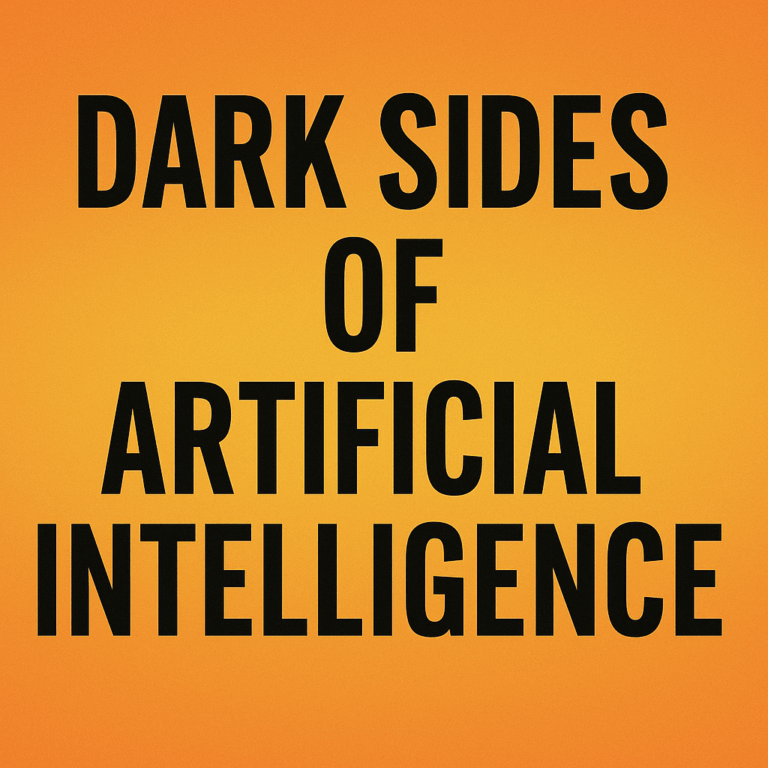Explore how AI-designed drugs are revolutionizing pharmaceutical development. Learn about the benefits, challenges, and future implications of artificial intelligence in drug discovery.
Introduction
The pharmaceutical industry has long faced significant challenges in drug discovery, including high costs, lengthy timelines, and high failure rates. Traditional methods for developing new drugs are not only expensive but also inefficient, with the process often taking more than a decade and costing billions of dollars. However, recent advancements in artificial intelligence (AI) are poised to revolutionize this landscape.
AI-designed drugs are beginning to enter clinical trials and even the market, offering the potential to drastically reduce development time and costs while increasing the success rate of new treatments. In this article, we will explore the fascinating world of AI-designed drugs, examining how AI is used in drug discovery, the benefits and challenges of this approach, and what the future holds for AI-driven pharmaceutical innovation.
What are AI-Designed Drugs?
AI-designed drugs are pharmaceutical compounds that are identified, synthesized, or optimized using artificial intelligence and machine learning algorithms. These algorithms analyze vast datasets, identify patterns, and predict outcomes that would be difficult or impossible for humans to determine alone. AI technologies help streamline multiple aspects of drug development, from target identification and lead optimization to clinical trial design and personalized medicine.
How Does AI Work in Drug Discovery?
The process of using AI in drug discovery typically involves the following steps:
- Data Collection and Curation: AI algorithms require large datasets, including genomic data, chemical libraries, disease pathways, and historical clinical trial data. This information is compiled and cleaned to ensure accuracy.
- Target Identification: AI analyzes biological data to identify potential targets (such as proteins or genes) that play key roles in diseases. This step helps researchers focus on the most promising avenues for intervention.
- Molecule Design and Screening: AI models generate and evaluate potential drug candidates, predicting how these molecules will interact with the target and whether they will be effective.
- Lead Optimization: After identifying a promising molecule, AI helps optimize its properties (e.g., potency, safety, and bioavailability) to improve its effectiveness and reduce potential side effects.
- Clinical Trial Design: AI can assist in designing clinical trials, selecting appropriate patient populations, and predicting outcomes to improve the chances of success.
The Rise of AI in Drug Discovery
Historical Context
For decades, drug discovery has relied on a combination of scientific intuition, trial-and-error methods, and high-throughput screening. This approach, while groundbreaking in its time, is labor-intensive and inefficient. The Human Genome Project, completed in 2003, provided a wealth of genetic information, but the sheer volume of data presented new challenges for researchers.
The rise of AI and machine learning has offered a way to harness this data, enabling more targeted and efficient drug discovery. Companies and research institutions have begun incorporating AI tools into their workflows, leading to significant advancements in the field.
Key Milestones in AI-Designed Drugs
- 2016: Atomwise, a company using AI for drug discovery, identified potential treatments for the Ebola virus using its deep learning platform.
- 2019: Insilico Medicine used AI to generate a novel drug candidate for fibrosis in just 46 days.
- 2020: BenevolentAI identified a potential drug to treat COVID-19 using AI, which subsequently entered clinical trials.
- 2023: The first AI-designed drug for idiopathic pulmonary fibrosis (IPF) entered Phase II clinical trials, marking a significant milestone in AI-driven pharmaceutical development.
These successes demonstrate the potential of AI to accelerate drug discovery and provide new treatments for challenging diseases.
Benefits of AI-Designed Drugs
1. Faster Drug Discovery
Traditional drug discovery can take 10-15 years from initial research to market approval. AI can significantly shorten this timeline by automating data analysis, molecule design, and preclinical testing. AI tools can generate and screen thousands of potential compounds in a matter of days, accelerating the identification of promising candidates.
2. Cost Reduction
Drug development is notoriously expensive, often exceeding $2 billion per successful drug. AI helps reduce these costs by streamlining processes, reducing the need for extensive laboratory work, and minimizing failures during the early stages of development.
3. Increased Success Rates
AI can predict which drug candidates are most likely to succeed, reducing the risk of failure in clinical trials. By analyzing patterns in biological data and historical trial results, AI can help identify molecules with the highest probability of efficacy and safety.
4. Personalized Medicine
AI enables the development of personalized therapies tailored to individual patients’ genetic profiles. This approach can improve treatment outcomes and reduce adverse effects by ensuring that patients receive the most effective therapies for their specific conditions.
5. Drug Repurposing
AI can identify new uses for existing drugs, a process known as drug repurposing. This strategy is faster and less risky than developing entirely new drugs, as repurposed drugs have already been tested for safety.
Challenges and Limitations of AI-Designed Drugs
1. Data Quality and Availability
AI models rely on high-quality, comprehensive datasets. Incomplete, biased, or inaccurate data can lead to flawed predictions. Ensuring data quality and standardization remains a significant challenge in AI-driven drug discovery.
2. Interpretability and Transparency
Many AI algorithms, particularly deep learning models, are “black boxes,” meaning their decision-making processes are difficult to understand. This lack of transparency can be a barrier to regulatory approval and adoption in the pharmaceutical industry.
3. Regulatory Challenges
The regulatory framework for AI-designed drugs is still evolving. Regulators must adapt to new technologies and ensure that AI-driven methods meet safety and efficacy standards. Companies must provide evidence that AI-generated drug candidates are as reliable as those developed through traditional methods.
4. Ethical Concerns
AI-driven drug discovery raises ethical questions related to data privacy, algorithmic bias, and the potential for job displacement among researchers. Addressing these concerns is essential for the responsible development and deployment of AI technologies.
5. Integration with Existing Workflows
Incorporating AI into traditional pharmaceutical workflows requires significant investment in infrastructure, training, and collaboration. Many organizations face challenges in integrating AI tools with existing processes and systems.
Case Studies of AI-Designed Drugs
1. Atomwise and Ebola Treatment
Atomwise uses deep learning to predict the binding of small molecules to biological targets. In 2016, the company identified potential treatments for the Ebola virus in just a few days, a process that would have taken months using traditional methods. This success demonstrated the potential of AI to accelerate drug discovery for infectious diseases.
2. Insilico Medicine and Fibrosis Drug
In 2019, Insilico Medicine used AI to generate a novel drug candidate for fibrosis in just 46 days. The company employed generative adversarial networks (GANs) to design new molecules and test their potential efficacy. The resulting drug candidate showed promising results in preclinical testing and has since advanced to clinical trials.
3. BenevolentAI and COVID-19 Treatment
During the COVID-19 pandemic, BenevolentAI applied its AI platform to identify existing drugs that could be repurposed to treat the virus. The company’s AI identified baricitinib, a drug originally used for rheumatoid arthritis, as a potential treatment for COVID-19. The drug was later approved for emergency use by the FDA.
The Future of AI-Designed Drugs
1. AI and Precision Medicine
The future of AI in drug discovery will likely involve greater integration with precision medicine. AI can help identify genetic markers that predict how patients will respond to specific treatments, enabling the development of targeted therapies.
2. Advanced AI Models
As AI models continue to evolve, they will become more sophisticated and capable of handling complex biological data. Advances in natural language processing, deep learning, and reinforcement learning will further enhance AI’s capabilities in drug discovery.
3. Collaboration Between Humans and AI
Rather than replacing human researchers, AI will augment their capabilities. Collaborative efforts between AI systems and human scientists will drive innovation, combining the strengths of machine learning with human expertise and creativity.
4. Global Access to AI-Driven Therapies
AI has the potential to democratize drug discovery, making it more accessible to researchers and patients worldwide. By reducing costs and development times, AI can help address unmet medical needs in low- and middle-income countries.
Conclusion
AI-designed drugs represent a transformative shift in pharmaceutical development, offering faster, cheaper, and more efficient methods for discovering new treatments. While challenges remain, the potential benefits of AI in drug discovery are immense. By embracing AI technologies, the pharmaceutical industry can accelerate innovation, improve patient outcomes, and address some of the most pressing




